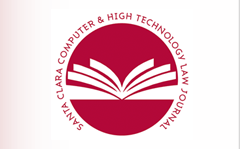Abstract
Patentable subject matter has become one of the most controversial areas of patent law. Efforts to articulate a lucid and productive theory of patentable subject matter must acknowledge that there are two competing models of unpatentable subject matter. One posits that natural laws, natural phenomena, and abstract ideas are themselves ineligible for patenting, and that each example of a natural law, natural phenomenon, or abstract idea further defines a class of inventions that cannot be patented because they lack an additional element of ingenuity—or “inventive concept”—that sufficiently distinguishes those inventions from their natural counterparts. This “penumbral” model of unpatentable subject matter mirrors the statutory structure of anticipation and obviousness. The competing “binary” model of unpatentable subject matter posits that one must only apply a natural law, natural phenomenon, or abstract idea in a useful manner in order to have a patent-eligible invention. Potential versus application is an either/or proposition. Recent attempts to achieve synthesis have adopted the penumbral model. However, the shadows and degrees of the penumbral model are an uncomfortable fit for the subject-matter inquiry. Particularly in the case of natural laws, treating newly discovered principles as a given (or as a baseline to which one must add a further “inventive concept”) threatens to overlook the true nature of invention, as well as valuable contributions to the technological arts. Here, at least, the binary model is in need of revival and reaffirmation.
Recommended Citation
Alan L. Durham,
Two Models of Unpatentable Subject Matter,
31 Santa Clara High Tech. L.J. 251
(2014).
Available at: https://digitalcommons.law.scu.edu/chtlj/vol31/iss2/3
